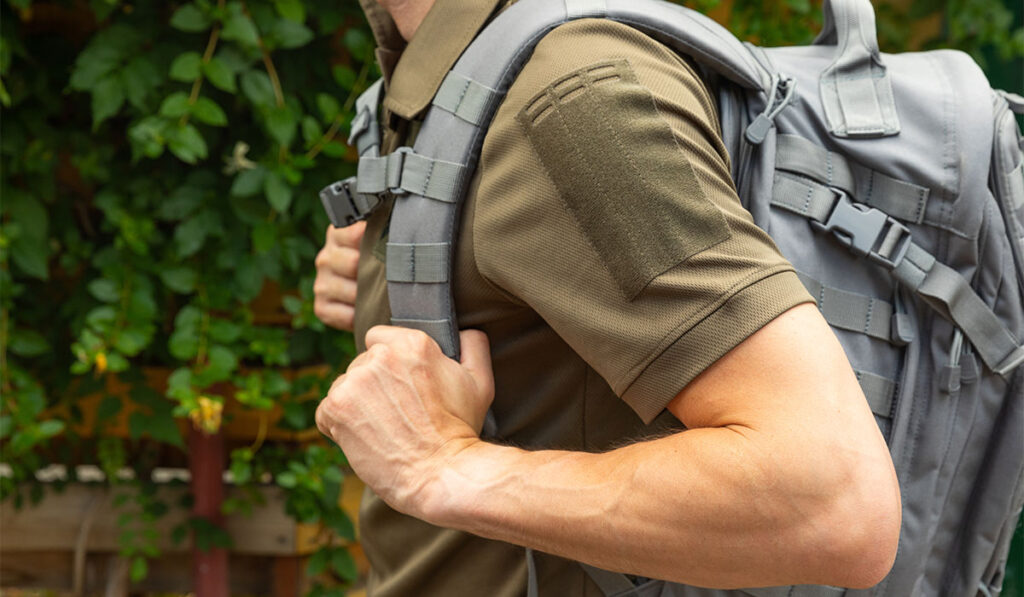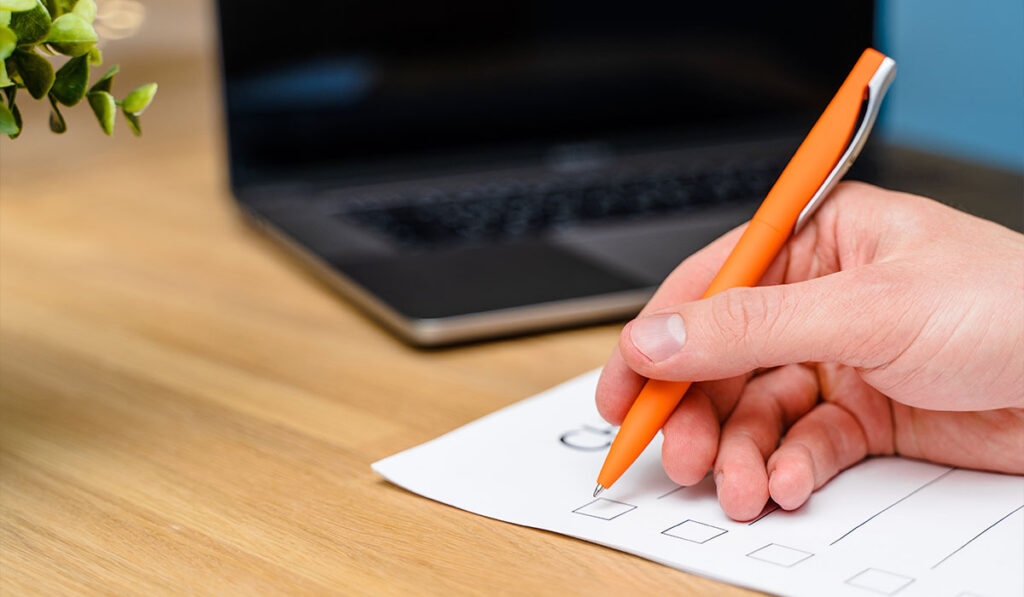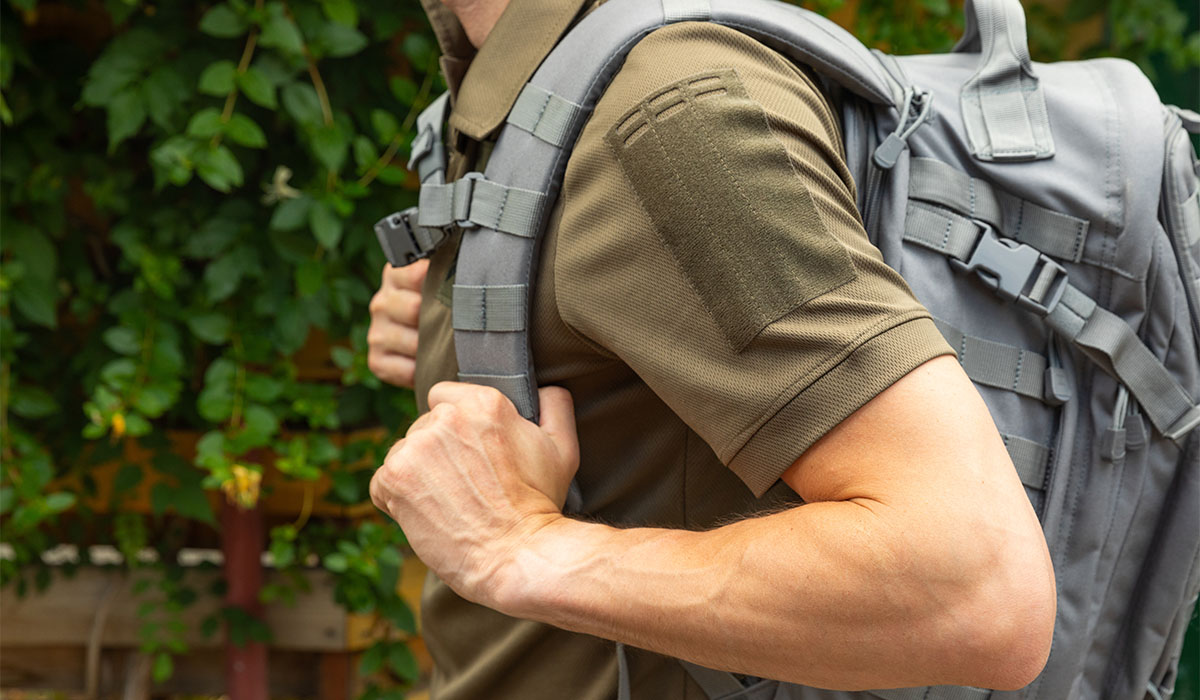Unfortunately, most people do not plan for a scenario where they cannot get home. The main reason for this is that most people feel like they can always get home, and that can be an unrealistic expectation.
Major disasters incapacitate millions every year. In the cases we read about where people get lost in the wintertime, attempting to get home was the incorrect decision in a lot of these cases. When staying where they were was the more prudent decision and in many cases would have saved lives. But if you need to Get Home then you need a GHB, with all the supplies you will need to make that trip.
Another reason people are driven to get home is that they made no other plans for an event when they could not get home. Thus, they were ill prepared for being in a situation where getting home was not an option and leading them to feel they must get home.
Choosing the Path With the Least Risk

In most cases, staying where you are is the safest place to be. Naturally, there are circumstances where you must leave or move to another location. But in most cases, staying where you are increases your chances of survival. Secondly, if you must move, then hopefully you have a predetermined plan, and resources, and have to fall back on.
In cases where you are caught unexpectedly and cannot get home, a life-saving tool is your Get Home Bag. You should have a Get Home Bag in every vehicle, carry it with you even when you go on short hikes, and take one with you any time you travel with another person. It may sound silly in some cases, but it can be life saving, more than just an inconvenience.
The Get Home Bag is NOT just for getting home but has enough supplies to sustain you for approximately 48 hours. In most cases, this is enough time for your situation to change for the better, someone finds you and you can get the assistance you require.
There are two key elements of making sure you can survive in a situation where you cannot get home or are lost. First, you must have contingency plans and secondly, you must have equipment.
Preparing a pre-trip backup plan is essential to surviving any bad situation you may encounter. There are several reasons you may not be able to make it home from storms, natural disasters, civil unrest, lost on a hiking trail, and major traffic accidents.
All of these events can mean that you are stuck in your car for a much longer period than you anticipated. Thus, creating new issues that you must deal with from running out of fuel to needing to use the bathroom, hungry and tired, and cold all now become serious issues. Planning is the key to survival in these unpredictable situations.
One of the most important aspects of pre-trip planning is checking the weather. If you feel there is an impending storm, whether a winter or summer storm, especially, if the weather services are warning of a potentially dangerous situation. Then do not go.
Stay home or at your location and hunker down. This includes weather systems like severe thunderstorms, tornado warnings, winter snow storms, and ice storms. If you live in a large city, then traffic reports can be of equal value.
Knowing there is a major traffic accident, construction, or another related impediment can be exceedingly helpful and prevent unanticipated extended delays.
Pre-Trip Planning Checklist

This additional pre-trip planning may take some extra time, but in the event of a bad situation, you will be more than happy you took the extra effort. For example, let’s say you are going to grandma’s house 8-hours away and some of the travel may be on back roads. Your pre-trip planning should include the following:
- General review of a map to best understand your trip dynamics
- Determine at least one alternate route should your planned route be blocked for any reason
- Bring a paper map with you, don’t always believe your GPS directions
- Identify several landmarks you expect to see along your route
- Check the weather along the route and particularly look at forecast weather
- Determine the expected travel time
- Calculate your estimated fuel usage
- Pick potential points for stopping for fuel and food
- Identify several hospitals along the route
- Make note of any friends or family that may be along the route and could be safe havens
The evolution of the cell phone has resulted in a major increase in traveling safely. It has significantly enhanced one’s ability to communicate in almost any circumstance, and location, and has drastically eliminated the need to leave your vehicle.
The ability to communicate from your vehicle is a tremendous advantage. But as you have seen this winter and during summer storms in the Midwest, there are still unexpected times when you are stuck in your vehicle for extended times and or need to abandon your vehicle and walk.
The advantages of the cell phone in many cases have created the unrealistic expectation of being safe. This is a fallacy that has gotten many folks in more trouble.
However, the cell phone is one of your most valuable survival tools, it can be a GPS, flashlight, or telecommunications tool, people can find you by pinging it, and it can be a map. But do not over-rely solely on it; if you should be without it for any reason, then you are back to basics. So knowing and being prepared to function at a basic level is important.
Listed below are four action plans for when you cannot get home or are lost.
First, you need to stay calm. You have planned for this. You know what to do. Have confidence in your preparations. If you are upset about your situation you increase the chances you will make bad decisions.
It is very important in these untoward situations that you do your best to remain relaxed and carefully think about your actions. Take your time, if you feel you are getting over-excited then take several big deep breaths and that will help calm you down.
Secondly, carefully evaluate your situation. You planned for this, so go through your plan and determine the best means to deal with the situation. This may mean identifying your safe havens or alternative routes. If lost on a trail or in the woods, then as you review your plan and seek a temporary shelter.
Thirdly, you need to establish communications with respective parties. So for example your first call may be for help, followed by an immediate call to your family to explain your situation. Always make your call for HELP first, if that is needed.
Never call your family first when you need help…. It is imperative that you let both know your location and your plan. This is vital. The extra strain of a family worrying and even taking the chances of going out and looking for you place more people at risk. Rely on the professionals if that level of response is needed.
Finally, you may need access to the contents of your Get Home Bag (GHB). This is essential to your safety in a natural disaster, or storm, when you might be stuck in your vehicle for an extended period, need to evacuate your vehicle to seek help, or if you are lost in the woods.
As mentioned above, you should have a Get Home Bag in every vehicle and if you are traveling as a family, each member should have some form of Get Home Bag. Anytime you are going on a short hike or a day-long trek, you should be carrying your Get Home Bag.
Building your Get Home Bag
Your Get Home bag should be a medium-sized backpack. Usually, these are listed as daypacks or medium-sized backpacks. In most cases, they measure 19″ tall and about 13″ wide. Most have numerous pockets and compartments.
The one pictured below is a very traditional style GHB. Listed below are the twenty essential contents of your Get Home Bag. We have included a link below that directs you to the NCCA page with backpacks you can select as a GHB.
Get Home Bag Contents
- Season-appropriate clothing including shirt, sweater, pants, socks
- Work gloves – dust mask
- Large plastic bag
- Walking shoes
- Hat
- Sunglasses
- Rope/paracord 50ft
- First Aid Kit- ace wrap, 4×4 gauze pads, bandaids, tourniquet, QuikClot bandage
- Compass/GPS/Local map/Whistle/Signal Mirror
- Flashlight with extra batteries
- Lighter/Firestarter
- Water/Gatorade x3/water filter
- Protein bars/MRE/gum
- Knife
- Multitool
- Prepaid credit card($100)/Cash ($100)
- Personal Protection tools/ammo, pepper spray
- Four days of medications/Tylenol or Ibuprofen
- Toilet paper/Wet wipes
- Solar Charger/cell phone charger connector
Once you have gathered your Get Home Bag items, then pack your backpack and make sure it fits comfortably. Next, you will need to put on your backpack and walk at least a mile.
Remember, if you need to access your GHB and exit your vehicle in a bad environment, you may not have time to make all the adjustments to ensure your GHB fits comfortably and feels right. It will not take long for an uncomfortable ill-fitting bag to become a serious problem.
So you must know your bag is adjusted correctly and fits well. In addition, you should be prepared to carry the extra weight of your GHB. In most cases, the bag will weigh 15 to 20 lbs. Now that does not seem like a lot, but if you are not used to carrying that weight it will become heavy in no time.
That is why it is important to identify and pack only essential items. Thus, if you do not exercise regularly, then you should take at least a one-mile walk once a week wearing your GBH on. Naturally, make sure you are medically cleared for such an activity.
What About kids?
If you have kids, you need a GHB specifically designed to fill their needs. Several of the supplies listed above, such as personal protection equipment, rope, and first aid kit can be eliminated from your “kids” bags and can be replaced with more kid-appropriate items such as diapers, baby food, condensed milk, and child-friendly snacks. Additionally, it is important to have some type of kid-friendly entertainment in their GHBs.
Understanding How to Use your Tools
It is equally important to know how to use the equipment in your GHB. So you should take a course or watch a video on things like compass use, map reading, first aid, and survival. Then practice these skills and be comfortable using them.
An example might be, when you take your weekly walk with your GHB, you review your walk on a map and mark destinations. You could also use your compass to navigate your walk. These simple practice periods can be life-saving when they are needed for real.
In Summary
So the first step is to develop your Get Home plans followed by preparing your GHB. So whether you are stuck in your vehicle or need to get out and become mobile you have the emergency resources you need.
Get Home Bags are your easy go-to resource that will enhance your outcome in one of the situations. In most cases, it will take you a few hours to put your GBH together. Those hours may be life-saving.



